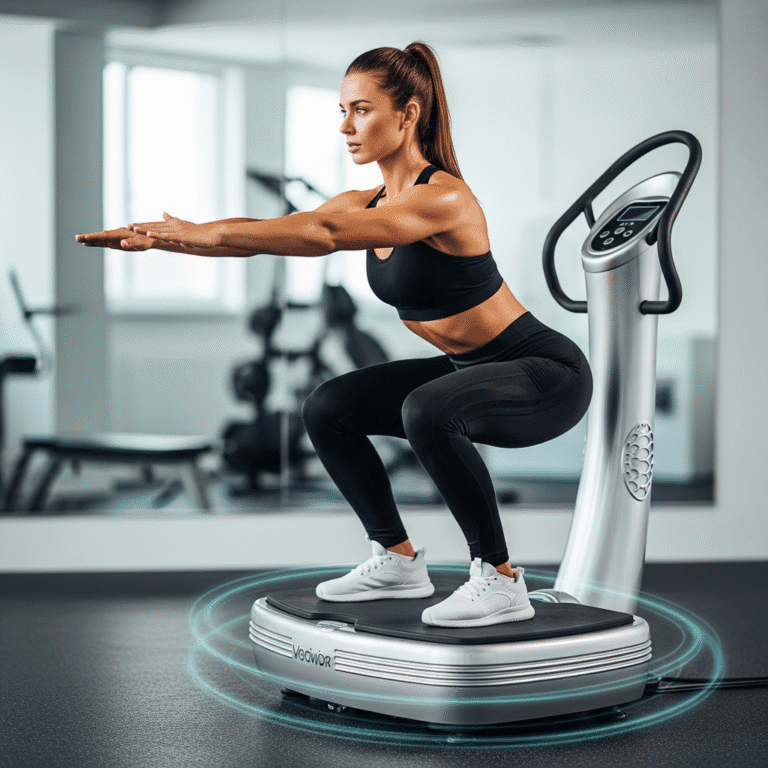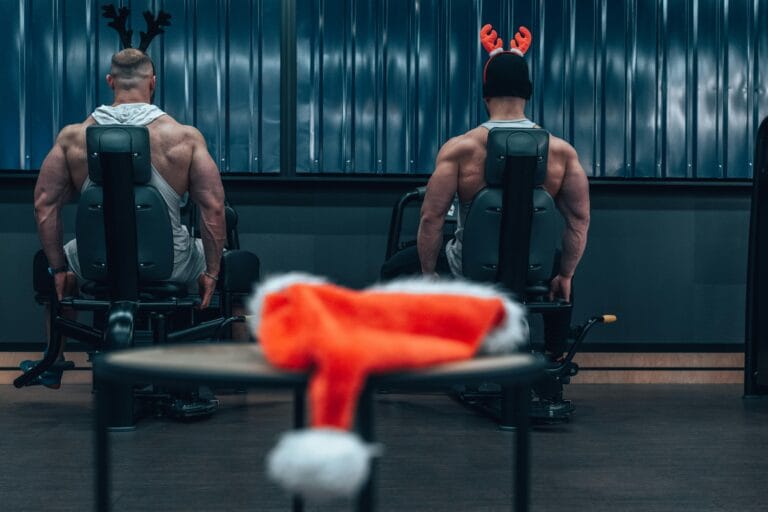FREE SHIPPING OVER $50
The 5-Minute Morning Routine That Reversed My Hunchback and Boosted My Confidence

Let’s be honest: modern life is designed to turn us into human question marks. The hours spent hunched over laptops, scrolling through phones, or driving long commutes train our bodies into a chronic slouched position—the dreaded hunchback, or technically, hyperkyphosis. This isn’t just an aesthetic issue; it’s a posture problem that causes neck pain, back stiffness, and, perhaps most surprisingly, a significant dip in self-assurance. When you slouch, you naturally project an image of low energy and low confidence.
I was deep in this cycle. My shoulders were chronically rounded, my neck ached, and I always felt self-conscious about my slumped posture. I tried elaborate routines, but consistency was impossible. The breakthrough came when I realized the solution had to be simple, fast, and ritualistic. I distilled the best advice from physical therapists into a single, 5-minute morning routine designed to be done before the coffee even cooled. This routine not only relieved the chronic pain but completely reversed my hunchback, which, in turn, gave my confidence a huge, unexpected boost.
The Core Problem: Understanding the Posture Trap
To effectively reverse a hunchback, we must understand the muscle imbalance responsible. This problem, often called Upper Crossed Syndrome, is driven by the fact that your front muscles and back muscles are fighting a constant, uneven battle.
The Imbalance: Short vs. Long
- Tight/Short Muscles: These are the Pecs (chest muscles) and the Upper Trapezius/Levator Scapulae (upper neck). Sitting hunched over trains these muscles to shorten, pulling your shoulders and head forward.
- Weak/Long Muscles: These are the Rhomboids and Middle/Lower Trapezius (mid-back stabilizers) and Deep Neck Flexors. These are the muscles that should be firing to hold your posture upright, but prolonged slouching allows them to become weak and dormant.
The 5-minute routine is strategically designed to attack both sides of this equation: we spend the first two minutes loosening the tight, short muscles in the front and the final three minutes activating and strengthening the weak, long muscles in the back.
The 5-Minute Morning Routine: Reversing the Slouch
Commit to performing this routine every morning, ideally right after you wake up, before your body sets into the stiffness of the day. You only need a piece of wall or a doorway.
Minute 1: The Doorway Pec Stretch (60 seconds)
This move directly targets the overly tight chest muscles (Pecs) that are responsible for pulling your shoulders into that rounded forward position.
- How to do it: Stand in a doorway or corner. Place your forearms flat against the frame, with elbows slightly below shoulder height. Slowly step one foot forward until you feel a comfortable, deep stretch across your chest. Keep your core gently engaged.
- Focus: Hold the stretch for a full 60 seconds. This long hold is necessary to encourage the deep chest fascia to lengthen, which immediately allows your shoulders to retract. Breathe deeply and sink into the stretch.
Minute 2: The Lat Wall Hang (30 seconds per side)
The Latissimus Dorsi (Lats) are large muscles of the back that, when tight, can contribute to shoulder rounding and restricted overhead movement. Loosening them is vital for better overhead posture.
- How to do it: Stand facing a wall. Place one hand high on the wall, shoulder-width apart. Take a small step back and push your hips slightly away from the hand on the wall until you feel a stretch down the side of your body and shoulder.
- Focus: Hold the stretch for 30 seconds on each side. This lengthens the side body, preparing the shoulder blades for the strengthening work to come.
Minute 3: Chin Tucks Against the Wall (60 seconds total)
This is the non-negotiable posture reset button. It strengthens the weak deep neck flexors and reverses the forward head posture associated with the hunchback.
- How to do it: Stand with your head gently touching the wall. Keeping your eyes level, slowly draw your chin straight back, as if creating a double chin, until your head presses slightly into the wall. Hold for 5 seconds, then relax.
- Focus: Perform 12 slow, controlled repetitions. You should feel tension in the front of your neck and a gentle stretch at the base of your skull. This directly addresses Tech Neck.
Minute 4: Wall Angels (60 seconds total)
The best move for combining thoracic mobility with shoulder strength—it forces your upper back to extend against the wall’s resistance.
- How to do it: Stand with your back, hips, and head against the wall (heels about 6 inches away). Bring your arms up into a “goalpost” position, pressing your wrists and elbows against the wall. Slowly slide your arms up the wall, then slowly slide them back down. Do not let your wrists or elbows leave the wall.
- Focus: Perform 10 to 12 slow repetitions. If you can’t keep your arms flush, reduce the range of motion. This activates the mid-back stabilizers and improves shoulder rotation.
Minute 5: Wall Scapular Squeezes (60 seconds total)
This simple exercise wakes up the weak Rhomboids and Mid-Trapezius muscles—the anchors of good posture.
- How to do it: Stand away from the wall with arms relaxed. Actively squeeze your shoulder blades down and back together as if trying to pinch a small object between them. Imagine you are trying to tuck your shoulder blades into your back pockets. Do not shrug your shoulders toward your ears.
- Focus: Hold the deep squeeze for 5 seconds. Repeat 12 times. This trains the strength and endurance needed to maintain a straight back throughout the day.
The Transformation: How Posture Reverses Hunchback and Boosts Confidence
The 5-minute routine delivers results in two primary, powerful ways: physiological correction and psychological transformation.
Physiological Change: Real Alignment
Within the first few days, the deep stretches relieved my chest tightness, making it feel physically easier to stand up straight. As I consistently strengthened the back muscles (Minutes 3-5), my shoulders began to rest naturally in a more neutral position.
- Relief from Pain: By correcting the forward head posture (the Chin Tucks), the tension on my upper traps and neck extensors dramatically decreased, eliminating those nagging tension headaches.
- Taller Stance: When the shoulders rotate back and the head centers over the spine, you literally gain height. This immediate visual change contributed massively to feeling physically better and more capable.
Psychological Transformation: The Confidence Boost
This was the “shockingly good” result I didn’t anticipate. Posture is a feedback loop for your brain.
- Energy and Presence: Standing tall increases oxygen flow and shifts your body language instantly. When my hunchback disappeared, I stopped projecting defensiveness and started projecting authority and openness. This change made me feel more present and boosted my natural energy.
- The “Power Pose” Effect: Research consistently shows that upright, expansive posture increases testosterone (a dominance hormone) and decreases cortisol (a stress hormone). By literally taking up more space, I felt less stressed and naturally more confident in social and professional settings.
- Reduced Self-Consciousness: I stopped worrying about how I looked when sitting or standing, freeing up mental energy that had previously been tied up in self-correction.
Making It a Non-Negotiable Ritual for Longevity
The secret to lasting posture correction is treating the routine like brushing your teeth—it’s non-negotiable.
- Habit Stacking: Anchor the 5-minute routine to an existing morning habit (e.g., waiting for coffee to brew, after drinking your first glass of water, or while your phone charges).
- Micro-Dosing Posture: Throughout the day, set a timer to perform 5 Chin Tucks and 5 Scapular Squeezes every 60 minutes. This micro-dosing prevents the day’s sitting from cementing the bad posture.
- The Check-In: Use your reflection in a mirror or a window pane to quickly check your posture. Your ear should be vertically aligned over the middle of your shoulder. This external feedback keeps you accountable.
Final Thoughts
The pursuit of better posture is a pursuit of better health, higher energy, and greater confidence. The 5-minute morning routine detailed here proved to be the simple, consistent solution that effectively reversed my hunchback. By dedicating just five minutes every morning to stretching the tight front and strengthening the weak back muscles, you can achieve remarkable and lasting posture correction. Start tomorrow, and within weeks, you’ll be standing taller, feeling stronger, and projecting the confident presence you always knew you had.
Related Articles
- The Muscle Activation Tricks Natural Bodybuilders Don’t Want You to Miss
- Over 50? These 5 Exercises Rebuild Muscle and Reverse Aging—No Supplements Needed
- If You’re Over 45 and Can’t Pass These 4 Strength Tests, Your Mobility May Be at Risk
- Over 40? Trainers Say These 6 Exercises Are Non-Negotiable for Strength and Longevity
- This Forgotten Bicep Trick From the Golden Era Builds Sleeve-Splitting Arms Fast



